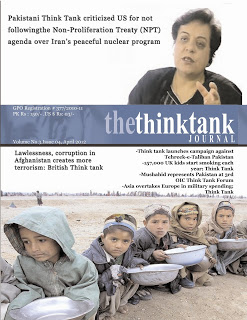The echoes of the May 2025 India-Pakistan military standoff linger, not just on the border but in the digital realm where a new war rages. This clash, sparked by India’s Operation Sindoor response to the April Pahalgam attack, transcended physical skirmishes, unveiling a sinister tapestry of disinformation woven with artificial intelligence (AI). From deepfakes to doctored news, India’s tactics have thrust the region into a fog of misinformation, exposing a global audience to a narrative battle that threatens stability.
The May 2025 Standoff: A Turning Point
The May 2025 military face-off between India and Pakistan wasn’t just a conventional clash—it marked a seismic shift in their engagement. Triggered by India’s retaliatory strikes after the deadly April 22 Pahalgam attack that claimed 26 lives, the conflict saw tanks roll and missiles fly. Yet, the real battlefield emerged online, where India unleashed an arsenal of algorithmic micro-targeting, narrative manipulation, and deepfakes. Old Sudan footage mislabeled as Indian missile strikes on Pakistan flooded X, courtesy of an AI chatbot like Grok, outpacing fact-checkers by hours. This digital onslaught, detailed in a July 2025 Bellingcat report, blurred the line between disinformation (deliberate falsehoods) and misinformation (unintentional errors), leaving the global community grappling with truth.
India’s Disinformation Playbook: A Legacy Exposed
India’s disinformation tactics aren’t new. The 2021 EU Disinfo Lab exposé unmasked a 15-year operation led by the Srivastava group, using fake media and the stolen identity of deceased jurist Louis B. Sohn to smear Pakistan as a terrorism hub. Fast forward to May 2025, and this playbook evolved with AI sophistication. Indian media, awash with jingoism, dominated X-spaces with unauthenticated claims, sparking domestic backlash as citizens questioned the frenzy. Deepfakes of Indian attacks on Lahore, shared 700,000 times before debunking, showcased AI’s power to manipulate perception. This tactic, honed since the 2019 Balakot strikes, aims to monopolize narratives, leveraging AI for coercive diplomacy and exaggerating battlefield wins, risking miscalculations in a nuclear dyad.
Pakistan’s Measured Response: Breaking the Illusion
In contrast, Pakistan’s military, via the Inter-Services Public Relations (ISPR), adopted a restrained digital strategy. Sharing only verified battlefield updates and real-time footage—unlike India’s doctored content—Pakistan exposed the fragility of India’s psyops. ISPR’s televised releases, including audio of damaged Indian assets, dismantled false narratives, earning global trust. This cautious approach, avoiding simulator footage as real-time engagement, highlighted a commitment to transparency. Pakistani cyber-intelligence further countered by identifying and neutralizing Indian disinformation trolls, shifting the narrative battle in Pakistan’s favor and diminishing India’s diplomatic clout, now tarnished by condemned war hysteria.
The AI Wildcard: A Double-Edged Sword
AI’s role in this conflict was a game-changer. The Grok chatbot’s rapid spread of misinformation—outpacing human verification by a factor of 86, per a July 2025 MIT study—underscored its danger. Deepfakes, too real to dismiss, sowed doubt, undermining military morale and decision-making, as noted by security analyst Sarah Khan. In a region where nuclear signaling is fragile, this erosion of information fidelity, as Clausewitz’s “fog of war” morphs into a digital haze, heightens escalation risks. The lack of robust AI regulation, a loophole India exploits, amplifies this threat, necessitating urgent global action.
The Global Wake-Up Call
The May 2025 standoff exposed India’s disinformation nexus to the world. Bellingcat’s findings of unverified AI content flooding X at breakneck speed—700,000 shares in hours—alarmed open-source intelligence networks. The EU Disinfo Lab’s prior revelations, coupled with this conflict, have eroded India’s credibility, with the global community now wary of its wartime narratives. Pakistan’s advocacy for AI regulatory frameworks, though outmatched by India’s diplomatic muscle, gained traction post-conflict, as nations recognize the need to curb digital warfare’s unchecked growth.
Why It Matters: Stakes and Solutions
Regional Stability
In a nuclear-armed South Asia, misinformation could trigger miscalculated retaliation. The May standoff’s digital chaos, narrowly avoided escalation, underscores the need for clarity in conflict zones.
Technological Ethics
AI’s unchecked proliferation demands codification. Pakistan’s push for indigenous frameworks to debunk AI content and train citizens in tech literacy could set a precedent, fostering private-public cooperation.
Global Trust
India’s discredited tactics risk isolating it diplomatically. Pakistan’s transparency boosts its standing, but both nations must navigate this new digital frontier to rebuild trust.
The Path Forward: Navigating the Digital Fog
Pakistan’s next steps are critical. Codifying AI ethics, developing homegrown tools to counter disinformation, and educating the public on wartime tech use can mitigate risks. International collaboration—perhaps a UN-led AI treaty—could enforce accountability, closing legal loopholes. As AI evolves, distinguishing synthetic from authentic content will be paramount, ensuring the digital battlefield doesn’t outpace human judgment in this volatile region.
A New Era of Warfare
The May 2025 India-Pakistan standoff has redefined conflict, thrusting AI-driven disinformation into the spotlight. India’s deepfake-laden campaign, exposed by Pakistan’s measured counter-strategy, has shifted global perceptions, dimming India’s diplomatic shine. With the nuclear stakes high and the digital fog thickening, Pakistan’s call for AI ethics offers a lifeline. This isn’t just a regional spat—it’s a wake-up call for a world where truth is the first casualty of war. The question remains: can humanity outsmart its own technology before it’s too late?



